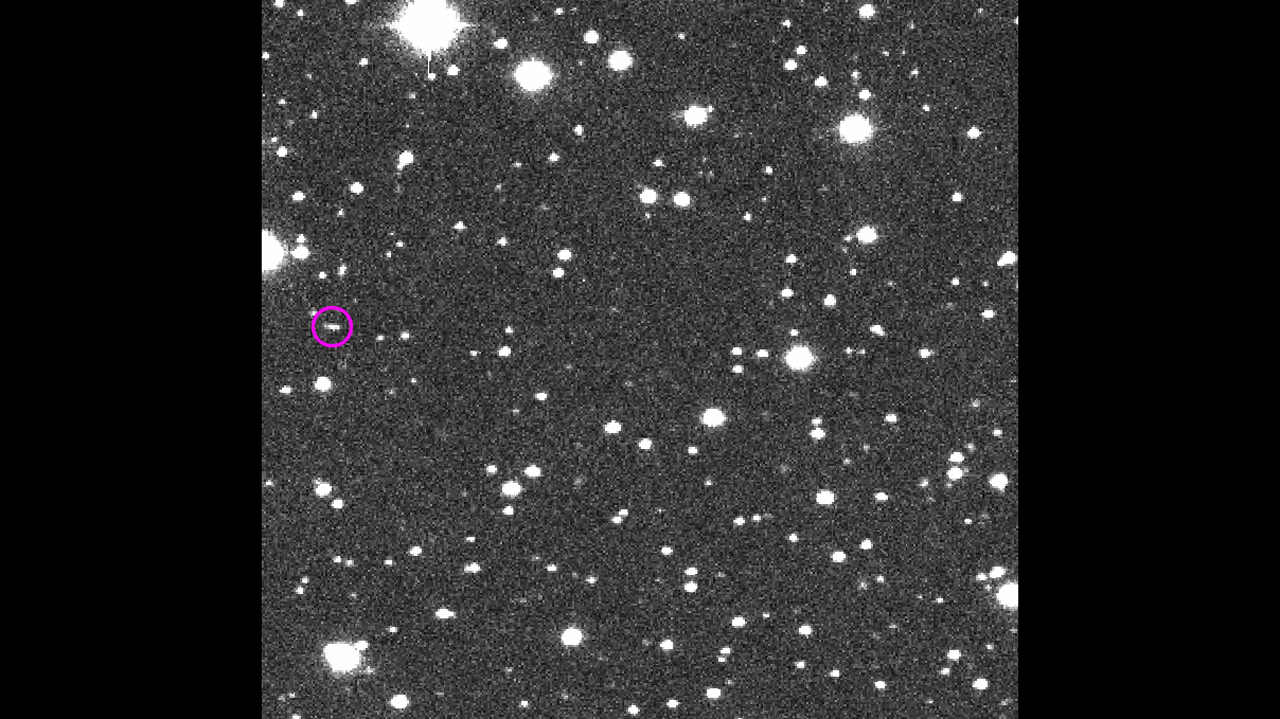Defenders of Planet Earth: Asteroid Hunters Scour Night Skies for Threats (Video)
To commemorate last week's celebration of Asteroid Day on June 30, NASA released three videos that describe the hunt for potentially dangerous asteroids. The short videos discuss the techniques for finding new objects, the two major surveys that discovered the bulk of new asteroids and a profile of the backyard astronomer who holds the record for the most asteroid observations in a year.
"The goal is to find near-Earth asteroids before they find us," Eric Christensen, an astronomer at the University of Arizona, said in one of the videos. Christensen is the director of the Catalina Sky Survey, one of the two NASA-sponsored programs responsible for discovering the bulk of new asteroids. The other is the Panoramic Survey Telescope and Rapid Response System, or PanSTARRS, located at Haleakala, Hawaii.
While most asteroids lie in the belt between Mars and Jupiter, some lie closer to Earth. Near-Earth asteroids (NEAs) orbit within 1.3 times Earth's distance to the sun. So far, more than 16,000 NEAs have been identified. Together with comets passing through Earth's neighborhood, these asteroids are classified as near-Earth objects (NEOs). [Near-Earth Asteroids: Famous Space Rock Flybys and Close Calls (Infographic)]

Italian astronomer Gioacchino Giuseppe Maria Ubaldo Nicolò Piazzi spotted the first asteroid in 1801. After half a decade, only 14 more had been found. But improvements in astronomical instruments accelerated the hunt, and today, astronomers have identified more than half a million space rocks, spotting an average of five new ones every night.
Despite technological advances, the process hasn't significantly changed in more than two centuries. Piazzi identified a new object and watched its orbit change gradually over the next few nights. Now, the biggest change is that computers more often fill in for human observers, quickly recognizing foreign objects and checking them against databases of known objects. By taking 30-second exposures rather than making written measurements, computers can identify a new object within minutes rather than days.
That doesn't mean people are obsolete. Human astronomers verify the new find, ruling out potential errors from starlight or blown camera chips. If confident about the discovery, they post the prospective asteroid's coordinates to the Minor Planet Center's NEO confirmation page, where computers calculate a preliminary orbit based on the data.
Before the asteroid has been confirmed, NASA's Center for Near-Earth Object Studies (CNEOS) is calculating how dangerous it might be. The center has a program known as Scout, which monitors the confirmation page, automatically computing the possible orbits of the unknown object. If the orbit has a chance of colliding with Earth, the newfound object is bumped higher on the priority list.
Get the Space.com Newsletter
Breaking space news, the latest updates on rocket launches, skywatching events and more!
"If our calculations indicate a new discovery could be coming close by Earth, we call in the reinforcements," CNEOS director Paul Chodas said in a statement. "NASA has a worldwide network of astronomers who perform follow-up observations."
These astronomers use their telescopes to try to identify the newfound object, then submit their coordinates to the MPC. The expanding information helps to refine the orbit, and often averts the crisis.
"In many cases, after a few more observations, we realize it's not high priority, because it's not going to come as close as suspected," Chodas told Space.com last year. "That happens quite often."
Both professional and amateur astronomers contribute to the page. Among them is backyard observer Robert Holmes of Westfield, Illinois, who is featured in the newly released videos. In 2015, Holmes made 36,000 asteroid observations, the most made by any observer in a single year. Each clear night, Holmes, who owns one of the largest privately owned telescopes in the world, according to the video, points his 24-, 30-, 32- and 50-inch telescopes toward the sky to hunt for asteroids.
"Having four telescopes allows me to do really four times as much work as the typical observatory that just has one telescope," Holmes said in the video. "It is a huge advantage."
Holmes started as a volunteer in 2006 and today works for NASA under a grant program. He spends every possible night at his instruments hoping to make a difference.
"You don't build a telescope that's this big without being passionate about what you do," he said. "The work we do today may make a difference 100 years from now."
PanSTARRS astronomer Richard Wainscoat, of the University of Hawaii, echoed the sentiment. "I feel a little bit like a guardian of the planet," Wainscoat said in the video. "I'm doing my bit to try to protect people."
Editor's Note: Space.com senior producer Steve Spaleta contributed to this report.
Follow Nola Taylor Redd on Twitter @NolaTRedd or Google+. Follow us at @Spacedotcom, Facebook or Google+. Originally published on Space.com.
Join our Space Forums to keep talking space on the latest missions, night sky and more! And if you have a news tip, correction or comment, let us know at: community@space.com.

Nola Taylor Tillman is a contributing writer for Space.com. She loves all things space and astronomy-related, and enjoys the opportunity to learn more. She has a Bachelor’s degree in English and Astrophysics from Agnes Scott college and served as an intern at Sky & Telescope magazine. In her free time, she homeschools her four children. Follow her on Twitter at @NolaTRedd









